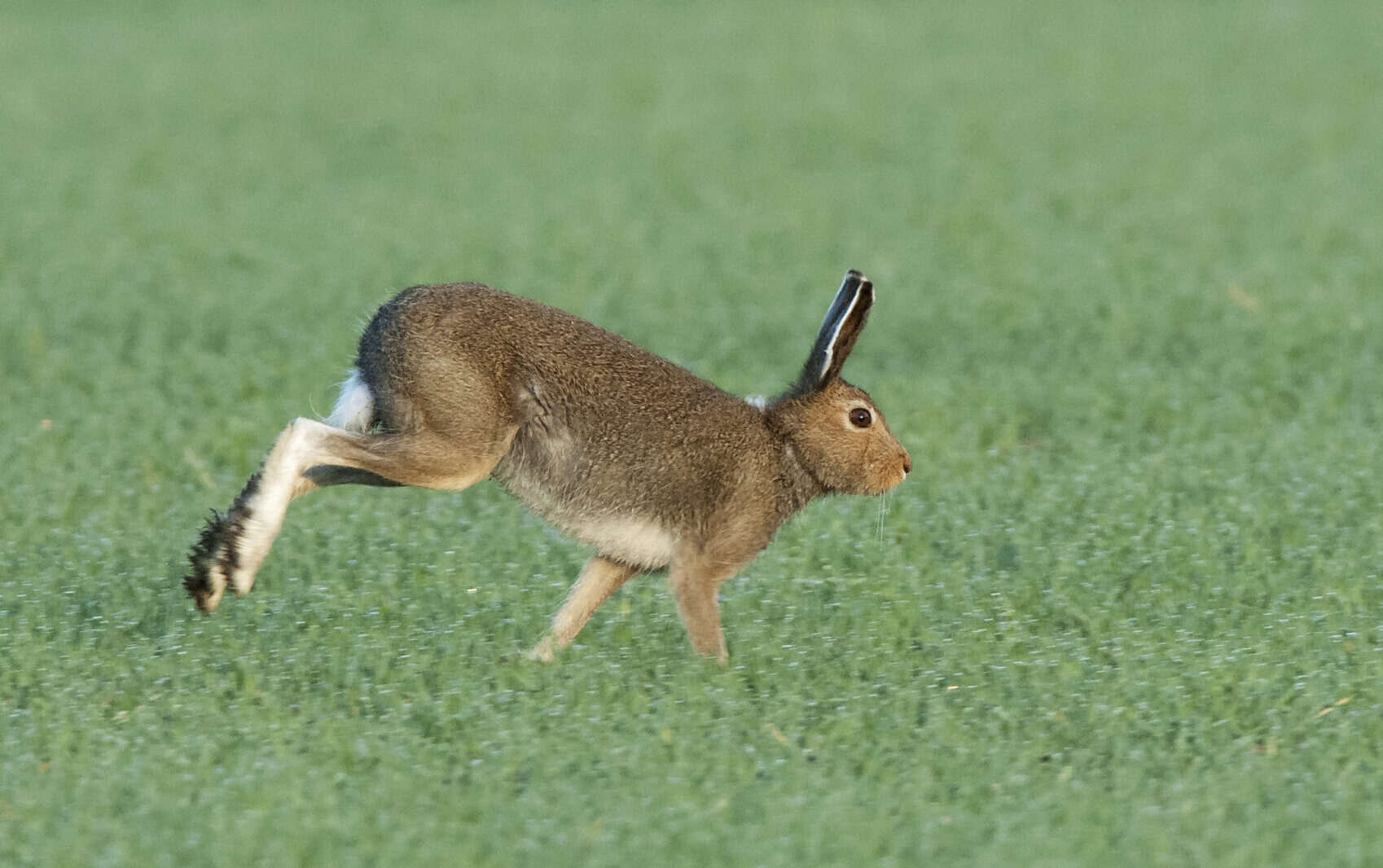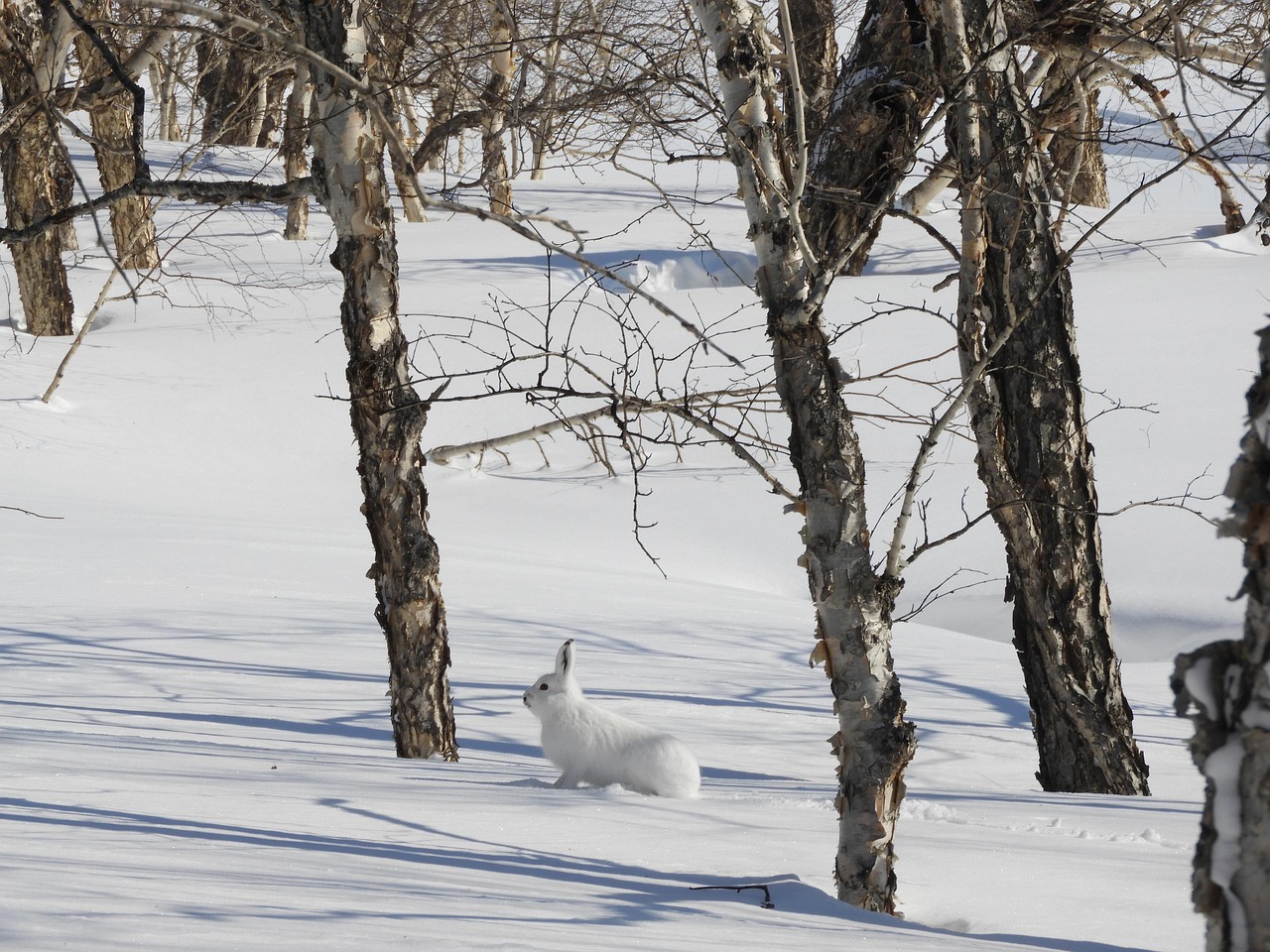Mountain Hare



Characteristics:
The mountain hare is slightly smaller and stockier than the European brown hare. Body length 45–65 cm, weight 2–5 kg. It has shorter ears than the brown hare, with distinct black tips. The most recognizable feature is its seasonal coat color: brown-grey in summer and white in winter, except for the ear tips which remain black year-round.
Habitat:
Common in forest areas throughout most of Sweden but declining in the south due to competition from the brown hare. Prefers coniferous and mixed forests, and also occurs in mountain birch forests further north.
Behaviour:
Mainly active at dusk and night. The mountain hare is solitary, with individuals occupying overlapping home ranges. It moves quickly and quietly, often in zigzagging leaps when disturbed.
Diet:
Herbivorous. Feeds on grasses, herbs, buds, twigs, bark, and heather. In winter, it eats mainly woody plants, birch shoots, and pine needles.
Reproduction:
Mating occurs from March to July. The female gives birth to 2–3 litters per year, each with 1–4 leverets. The gestation period is about 50 days. The leverets are born fully furred and with open eyes.
Tracks and signs:
- Tracks: Typical hare pattern — two long hind feet placed in front of the shorter front paws. Step length varies from 20 to 150 cm depending on movement speed.
- Droppings: Round pellets, about 1–1.5 cm in diameter, often grouped together.
- Resting place: Called a form, a shallow depression in grass or under shrubs.
Distribution:
Occurs throughout Sweden except on the island of Gotland. Most common in the northern half of the country. In southern Sweden, it has been displaced by the brown hare (Lepus europaeus), which thrives in open farmland and milder climates.
Hunting:
Hunted mainly in autumn and winter, often using scent hounds or by stalking.
Traditional hunting uses driving dogs that follow the hare’s scent trail through snow or frost.
Firearm class (Sweden):
Hunted with shotgun, or with a class 3 rifle (commonly using pellets size no. 4–6).
Think for the hunting exam:
- Changes coat colour: brown in summer, white in winter.
- Shorter ears than the brown hare, always with black tips.
- Produces several litters each year.
- Hunted with shotgun or class 3 rifle.
- Tracks show long hind feet placed in front of the shorter front paws.
- Rests in a shallow form under cover.
